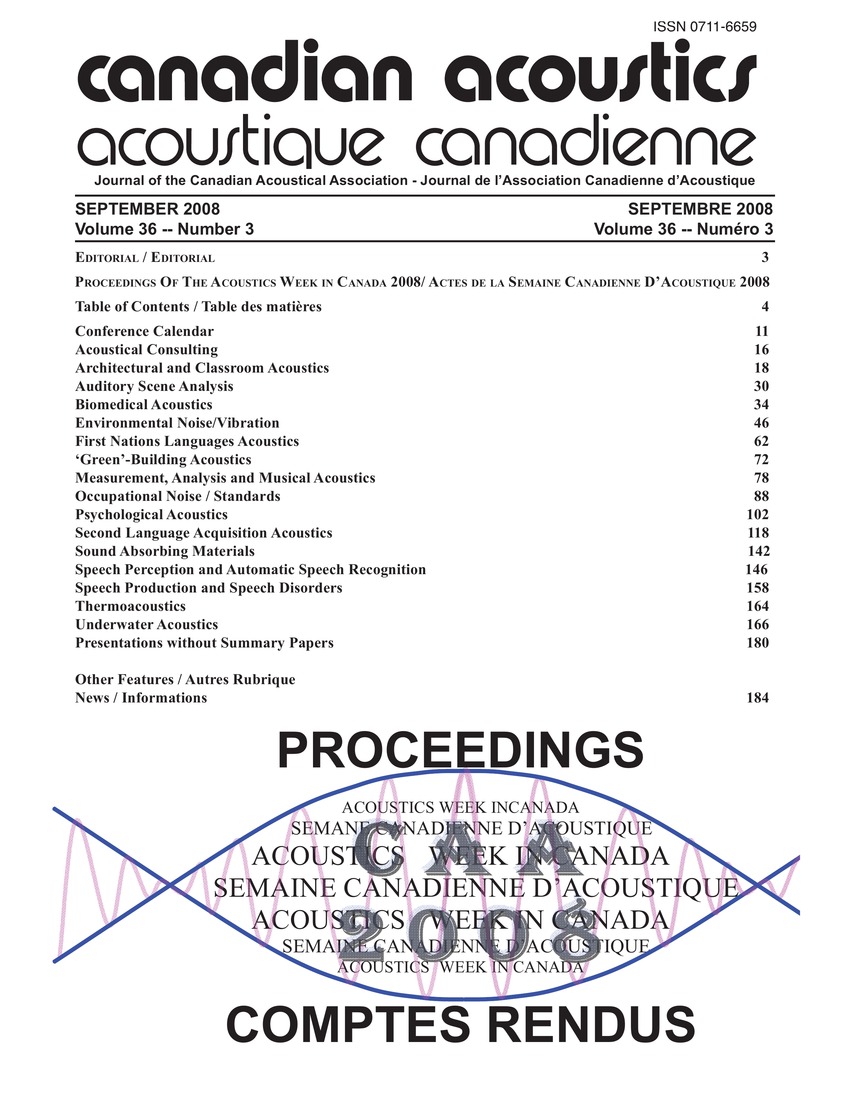Noise exposure from communications headsets: The effects of environmental noise, attenuation and SNR under the device
Keywords:
Acoustic noise, Correlation methods, Electric currents, Noise pollution, Background noises, Calculation methods, Correlation coefficients, Data sets, Environmental, Environmental noises, Field methods, Industrial sites, Noise exposures, Noise variations, Regression lines, Sound exposures, Sound levelsAbstract
The Canadian studies on headset exposure at various industrial sites and Crabtree are reviewed to gain more insight into the main determinants of headset sound exposure and to provide an empirical basis for the new calculation method under the CSA WG. The field method require two similar communication headset, one worn by the worker to carry out normal tasks and one placed on the manikin to measure sound levels under the device. The correlation coefficient shows that about 95% of the noise variation in headset sound level is explained by the environmental background noise around the user. The slope of regression line is found to be 0.42, which shows that the headset exposure rose by only 0.42 dB for each 1 dB increase in background noise over the data set. The headset equivalent sound levels and the background noise is found to be +12 to +15 dB in the quieter settings and -5 to 0 dB in the noisier settings.Additional Files
Published
How to Cite
Issue
Section
License
Author Licensing Addendum
This Licensing Addendum ("Addendum") is entered into between the undersigned Author(s) and Canadian Acoustics journal published by the Canadian Acoustical Association (hereinafter referred to as the "Publisher"). The Author(s) and the Publisher agree as follows:
-
Retained Rights: The Author(s) retain(s) the following rights:
- The right to reproduce, distribute, and publicly display the Work on the Author's personal website or the website of the Author's institution.
- The right to use the Work in the Author's teaching activities and presentations.
- The right to include the Work in a compilation for the Author's personal use, not for sale.
-
Grant of License: The Author(s) grant(s) to the Publisher a worldwide exclusive license to publish, reproduce, distribute, and display the Work in Canadian Acoustics and any other formats and media deemed appropriate by the Publisher.
-
Attribution: The Publisher agrees to include proper attribution to the Author(s) in all publications and reproductions of the Work.
-
No Conflict: This Addendum is intended to be in harmony with, and not in conflict with, the terms and conditions of the original agreement entered into between the Author(s) and the Publisher.
-
Copyright Clause: Copyright on articles is held by the Author(s). The corresponding Author has the right to grant on behalf of all Authors and does grant on behalf of all Authors, a worldwide exclusive license to the Publisher and its licensees in perpetuity, in all forms, formats, and media (whether known now or created in the future), including but not limited to the rights to publish, reproduce, distribute, display, store, translate, create adaptations, reprints, include within collections, and create summaries, extracts, and/or abstracts of the Contribution.


